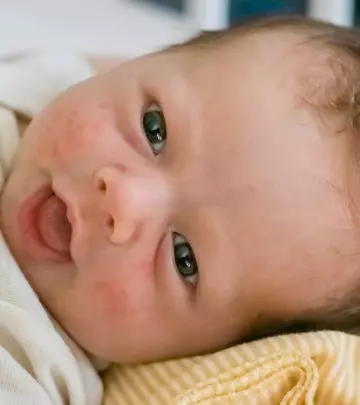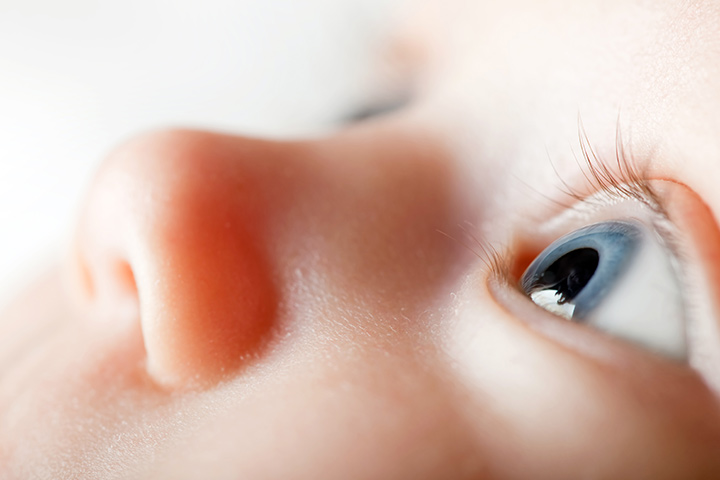
Image: Shutterstock
What were your thoughts about your baby when you were still pregnant? In all likelihood, you’d have wondered who your baby would resemble or what color your baby’s eyes will be. Once your baby is born, you look forward to the moment when they’ll fully open their eyes so you can see their eye color. Many factors determine your baby’s eye color like race or heredity. But one question on most parents’ minds would be if their baby’s eye color at the time of birth will remain the same throughout. Here are some facts about a baby’s eye color.
Eye Color At The Time Of Birth – Blue Or Grey
When we say the color of the eyes, we mean the iris. It is the colored part of the human eye. Just like human hair and skin, even the color of iris depends on the protein called melanin. Our body has specialized cells called melanocytes that secret melanin wherever it is required including the iris. When the baby is born, they usually have grey or blue-colored iris as the baby had always been in the womb, it is always dark inside, and melanocytes respond only to light (1).
Eye Color Changes That Occur Over Time
After a certain period following birth, if the melanocytes secrete very little melanin, then there are high chances that your baby will have blue eyes. If the melanin secretion is slightly more, then it’ll result in green or hazel eyes. However, if the melanocytes secrete more than enough melanin, then the resultant color of the iris would be brown or really dark. Since the melanocytes take almost a year to complete their work, it would be tricky to confirm the real color of your baby’s eyes until he/she celebrates their first birthday. Usually, the eye color change does slow down quite a bit after the first six months of birth. However, it does still leave scope for a lot of changes even after that.
Eye color is often genetically influenced too. But it isn’t as simple as you’d have learned in your biology class. Here are the various possibilities that can occur:
- Both parents with blue eyes will most likely have a child with blue eyes. But it’ll not be possible each time.
- Both parents with brown eyes are likely to have a child with brown eyes, but this isn’t guaranteed always.
- Even if one of the grandparents has blue eyes, the chances that a grandchild would be born with blue eyes go up quite a bit.
- If one of the parents has brown eyes and the other has blue, there are equal chances that a baby will be born with either of the eye colors.
- However, if your baby has one eye with brown eye color and another with blue, then make sure you take your baby to the doctor. It is a rare disease called Waardenburg syndrome (2).
Baby Seems Cross-Eyed?
Sometimes, parents may be taken aback to find their baby looking cross-eyed once in a while. However, this entirely normal for the first six months of a baby’s life. During this time, a baby’s vision isn’t accurate enough to focus on a target consistently. So, if you feel that, at times, your baby is looking elsewhere instead of looking at you, in all likelihood it is true. But, by week 4 or so, your baby will learn to focus on your face when you are cradling them. A little before 2 months, you’ll find that your baby will be able to follow your face or a toy that is a little away. But will often fall short of doing so if the object crosses from one side to the other. However, by 2 months your baby will be able to track left and right and back (3).
Isn’t it fascinating how much your baby’s eyes can change in a span for 6 months to a year? So, if you now find your baby’s eyes to be of a certain color, wait for at least a year before declaring it in any of those important forms!
















